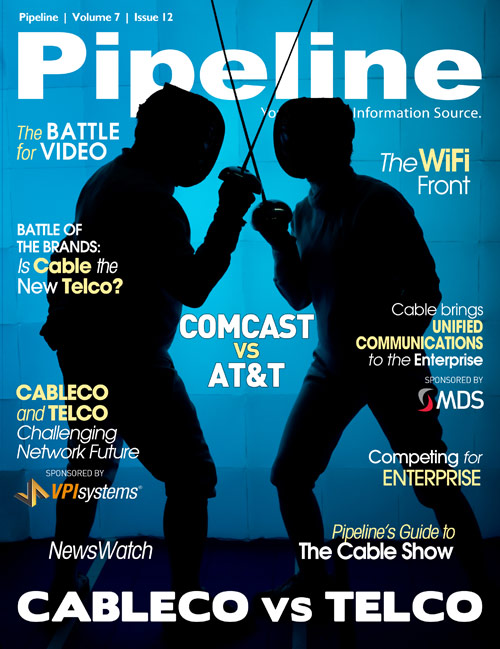By: Russ Green

While cableco and telco operators originally served completely separate markets, the introduction of IP broadband services has led to a lot of similarity in the communications products and services they now provide. It's likely that their offerings will continue to converge to a more common future. While cableco and telco operators have mostly been separate entities in North America, in other parts of the world there are examples of telcos that are also cablecos (and vice-versa). All of these cable, telco, and hybrid entities share future paths that raise differing and common challenges in making sure that their networks are ready to satisfy the common opportunities ahead over which they now compete.
Different Pasts, Converging Futures
The respective heritages of cablecos and telcos are clearly fundamentally different. Since their inception, cable operators have provided broadcast TV and radio entertainment services, while telcos' staple was the provision of voice services through landline telephones. There was a period of some competitive overlap with the bundling of satellite TV services with Telco product packages, but all of this changed when competitive IP broadband services were introduced. What followed soon thereafter was the cableco voice and IP product offerings. These, along with the regulatory changes that occurred in roughly the same timeframe, started downward pricing pressure that changed subscribers' communications habits forever.
Increasing bandwidth in IP services meant that telcos could start offering new services, too. TV services meant that the triple play of voice, internet and TV could now be offered by both camps. Both also introduced new derivative products like video-on-demand.


Wireless communications, the biggest growth area in terms of consumer spending, is now becoming part of the business domain for telcos and cable operators. Spectrum sales and new business models for selling wireless access capability, such as that which LightSquared offers in the US, mean that anyone can become a mobile service provider. The wireless market's rapid growth means that cable operators and telcos are now competing in the provision of backhaul services for mobile service providers, too.
Managing Network Change
Some things in life are certain; ongoing change in the network is one of them. Technology convergence, growing competition and the rapid change in the capacity new products and services require mean that cable operators and telcos have significant planning and design challenges ahead. Operators in both camps will have to take an end-to-end view of their network assets to ensure that they are ready to provide new services affordably.
A key to success is to include all parts of the network in any analysis of the network impact that results from changes in subscriber behavior brought on by new products and services. Consistency across organizations in understanding loads and vulnerabilities from reliability and capacity perspectives means that the real network cost of a product can be determined and made available before launch. Operators that take this robust approach are able to keep subscribers and enterprise customers happy even with significant changes in the network and its behavior. This type of planning and analysis is no longer an annual event. The pace of change means that these scenarios are part of normal business for planning and operations groups.
Different Challenges
As described earlier, cableco and telco operators have different backgrounds and experiences in the provision of their now common offerings. Some of the different challenges they face now are as a result of their respective histories.
When IP broadband services were introduced, cable operators had an incentive to launch voice products as quickly as possible to provide the first TV, internet and voice bundles. The complexities of launching voice meant that many companies chose to outsource some parts of this function. An example of this type of outsourcing is the handoff and management of calls to off-network destinations. The handling of a call handoff requires its routing to the optimum exchange switch to ensure the most cost effective use of inter-carrier agreements. By outsourcing this capability, the cable operator was able to reduce time to market and reap the benefits of selling bundled voice products.
Price pressure and cost management has meant that the margins lost through outsourcing are now seen as opportunities for operators to save money by bringing this in-house. The challenge here is to make sure that the subscriber experience is maintained through the transition while minimizing network costs. This means that an accurate view of subscriber behavior, projected network performance and inter-carrier agreements all have to be taken into consideration for these significant margins to be realized.




